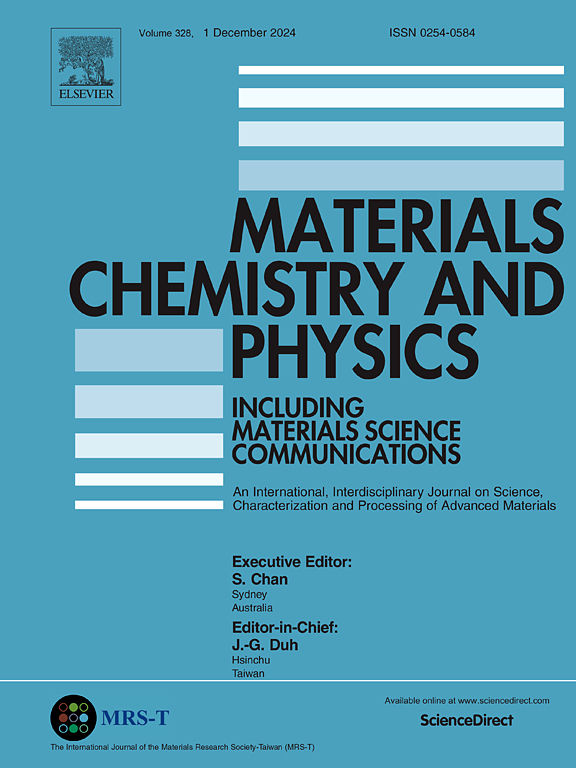2D/2D SnS2/Ti3C2 MXene composites for their supercapacitor and biosensor studies
IF 4.7
3区 材料科学
Q2 MATERIALS SCIENCE, MULTIDISCIPLINARY
引用次数: 0
Abstract
This study presents SnS2/Ti3C2 (ST) hydrothermal synthesis through a facile and efficient technique. The synthesized materials were thoroughly characterized using XRD, FESEM, HRTEM, EDX mapping, SAED, BET, and TGA. The electrochemical performance was assessed using a Nickel mesh electrode through cyclic voltammetry (CV), differential pulse voltammetry (DPV), electrochemical impedance spectroscopy (EIS), and galvanostatic charge-discharge (GCD) tests in 1M KCl. The GCD studies revealed an impressive specific capacitance of 206.32F/g, with a power density of 348.18W/kg and an energy density of 103.16Wh/kg. Notably, the material demonstrated exceptional cycling stability, maintaining 80 % retention after 20,000 cycles and exhibiting a Coulombic efficiency of 94 %, outperforming both SnS2 and MXene. The sensor displayed excellent sensitivity for dopamine and tyrosine detection, with linear ranges of 0–150μM and a limit of detection (LOD) of 6.98μM and 16.82μM for dopamine and tyrosine in CV, respectively, and 26.22μM and 119.01μM in DPV. Selectivity, reproducibility, and resistance to interference were also thoroughly evaluated, indicating outstanding sensor stability. Real-world applicability was demonstrated through successfully detecting dopamine and tyrosine in human blood and serum samples, demonstrating the material's suitability for biological sensing applications.

2D/2D SnS2/Ti3C2 MXene复合材料的超级电容器和生物传感器研究
研究了一种简单高效的水热合成SnS2/Ti3C2 (ST)的方法。采用XRD、FESEM、HRTEM、EDX作图、SAED、BET、TGA对合成材料进行了表征。采用镍网电极,通过循环伏安法(CV)、差分脉冲伏安法(DPV)、电化学阻抗谱法(EIS)和恒流充放电(GCD)测试,在1M KCl环境下评价其电化学性能。GCD研究显示,该电池的比电容为206.32F/g,功率密度为348.18W/kg,能量密度为103.16Wh/kg。值得注意的是,该材料表现出优异的循环稳定性,在20,000次循环后保持80%的保留率,并表现出94%的库仑效率,优于SnS2和MXene。该传感器对多巴胺和酪氨酸的检测灵敏度较高,CV中多巴胺和酪氨酸的检测限(LOD)分别为6.98μM和16.82μM, DPV中多巴胺和酪氨酸的检测限(LOD)分别为26.22μM和119.01μM。选择性,再现性和抗干扰性也进行了全面评估,表明出色的传感器稳定性。通过成功检测人类血液和血清样本中的多巴胺和酪氨酸,证明了该材料在生物传感应用中的适用性。
本文章由计算机程序翻译,如有差异,请以英文原文为准。
求助全文
约1分钟内获得全文
求助全文
来源期刊

Materials Chemistry and Physics
工程技术-材料科学:综合
CiteScore
8.70
自引率
4.30%
发文量
1515
审稿时长
69 days
期刊介绍:
Materials Chemistry and Physics is devoted to short communications, full-length research papers and feature articles on interrelationships among structure, properties, processing and performance of materials. The Editors welcome manuscripts on thin films, surface and interface science, materials degradation and reliability, metallurgy, semiconductors and optoelectronic materials, fine ceramics, magnetics, superconductors, specialty polymers, nano-materials and composite materials.
 求助内容:
求助内容: 应助结果提醒方式:
应助结果提醒方式:


